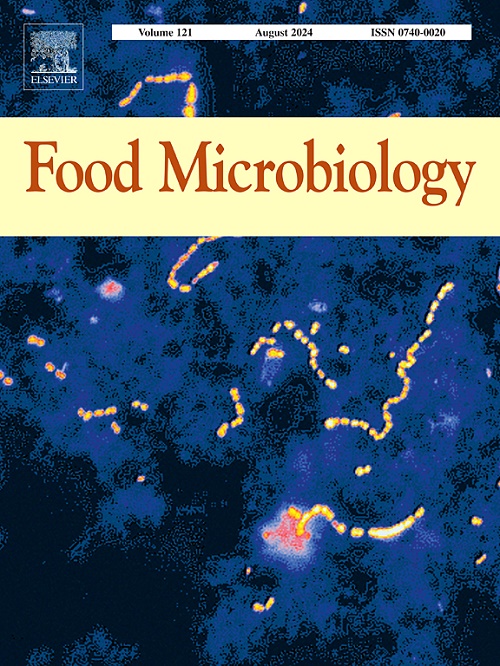Opposing regulation of Gig2 by RecA and GlrK controls redox-linked desiccation tolerance in Cronobacter sakazakii
IF 4.6
1区 农林科学
Q1 BIOTECHNOLOGY & APPLIED MICROBIOLOGY
引用次数: 0
Abstract
Cronobacter sakazakii is a desiccation-tolerant foodborne pathogen that poses a serious threat to neonatal health through contamination of powdered infant formula. Despite its clinical relevance and exceptional persistence in dry environments, the molecular basis of its desiccation tolerance remains poorly defined. Here, we systematically investigated the genetic and physiological determinants of C. sakazakii survival under desiccation stress. A functional screen of gene knockout strains revealed intricate relationships between surface hydrophilicity and desiccation tolerance, suggesting the involvement of alternative protective pathways. Integrative proteomic analysis identified the DUF1479 family oxidase Gig2 as a previously unrecognized factor critical for survival during desiccation and oxidative stress. Loss of Gig2 results in a significant reduction in desiccation tolerance, as indicated by a 2.2-log CFU decrease after 21 days of desiccation, without impacting surface hydrophilicity or growth under normal conditions. Structure-based molecular docking further revealed that phloretin, a natural polyphenol, binds Gig2 with high affinity and significantly reduces bacterial survival under dry conditions. These findings reveal a hydrophilicity-independent mechanism of desiccation tolerance in C. sakazakii and highlight Gig2 as a promising molecular target for controlling its persistence in low-moisture foods.
RecA和GlrK对Gig2的反向调控控制了阪崎克罗诺杆菌氧化还原相关的干燥耐受性
阪崎克罗诺杆菌是一种耐干燥食源性病原体,通过污染婴儿配方奶粉对新生儿健康构成严重威胁。尽管其临床相关性和在干燥环境中的特殊持久性,其干燥耐受性的分子基础仍然不明确。在此,我们系统地研究了sakazakii在干燥胁迫下存活的遗传和生理因素。基因敲除菌株的功能筛选揭示了表面亲水性和干燥耐受性之间的复杂关系,表明参与了其他保护途径。综合蛋白质组学分析发现,DUF1479家族氧化酶Gig2是一个以前未被认识的因素,对干燥和氧化应激期间的生存至关重要。脱水21天后,CFU下降2.2 log,表明Gig2的损失导致干燥耐受性显著降低,但在正常条件下,不影响表面亲水性或生长。基于结构的分子对接进一步揭示,根皮素是一种天然多酚,与Gig2具有高亲和力,可显著降低细菌在干燥条件下的存活率。这些发现揭示了阪崎c耐干燥的亲水性不依赖机制,并突出了Gig2作为控制其在低水分食物中持久性的有前途的分子靶点。
本文章由计算机程序翻译,如有差异,请以英文原文为准。
求助全文
约1分钟内获得全文
求助全文
来源期刊

Food microbiology
工程技术-生物工程与应用微生物
CiteScore
11.30
自引率
3.80%
发文量
179
审稿时长
44 days
期刊介绍:
Food Microbiology publishes original research articles, short communications, review papers, letters, news items and book reviews dealing with all aspects of the microbiology of foods. The editors aim to publish manuscripts of the highest quality which are both relevant and applicable to the broad field covered by the journal. Studies must be novel, have a clear connection to food microbiology, and be of general interest to the international community of food microbiologists. The editors make every effort to ensure rapid and fair reviews, resulting in timely publication of accepted manuscripts.
 求助内容:
求助内容: 应助结果提醒方式:
应助结果提醒方式:


